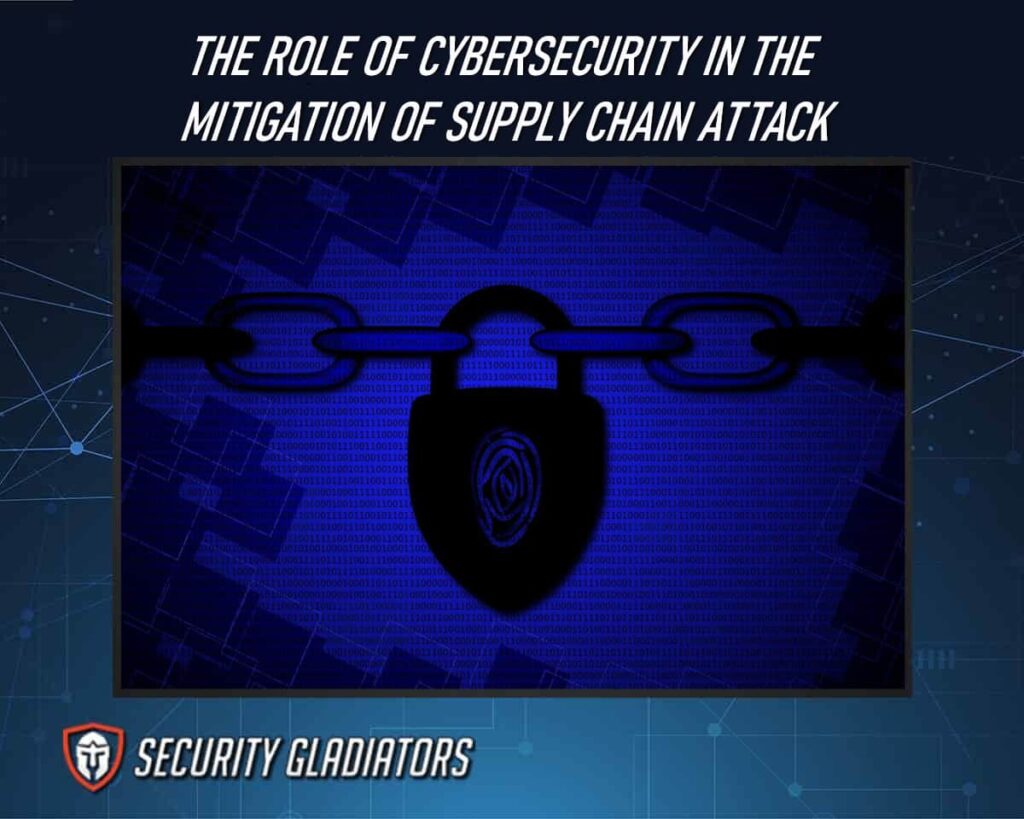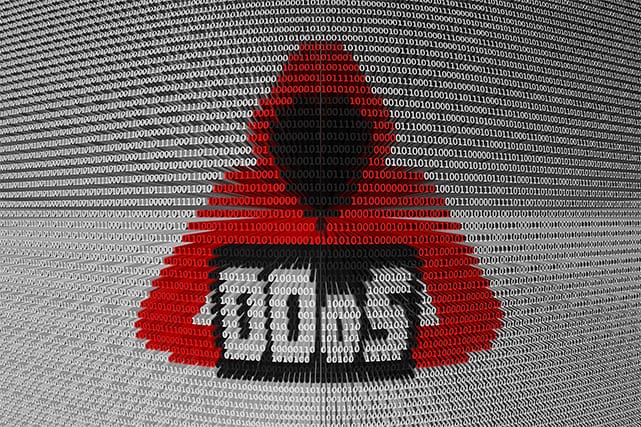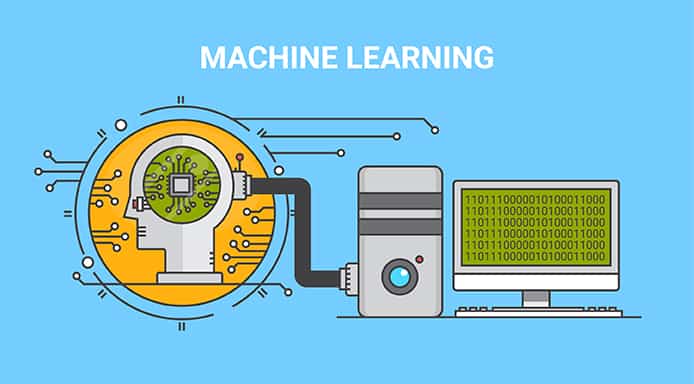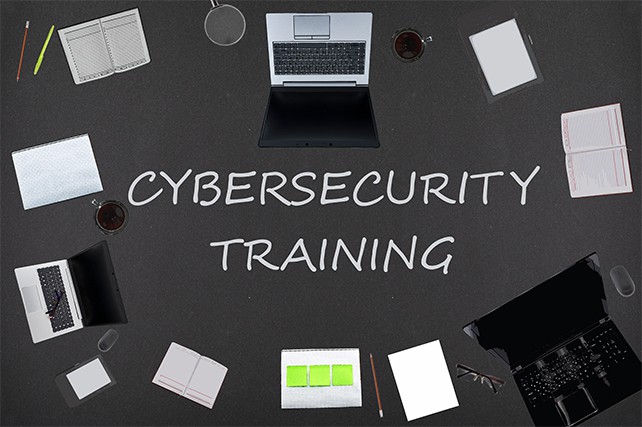To begin, it is necessary to understand what is meant by a supply chain attack. A supply chain attack occurs when malicious code is inserted into a legitimate software update delivered to an organization, allowing attackers to gain access to confidential information or systems. The malicious code can be spread widely and quickly, allowing attackers to take control of multiple systems within an organization’s network.

The implications of successful supply chain attacks can be immense; they may lead to financial losses, legal and regulatory sanctions, reputational damage, and loss of customer trust. Therefore, it is essential for organizations to understand the importance of cybersecurity measures in mitigating such risks. This article will provide an overview of the key elements that organizations should consider when developing their security strategy against supply chain attacks.
Table of Contents
What Are Supply Chain Attacks?
Cybersecurity is a critical component of managing risk in the global supply chain. Supply chain attacks are increasingly becoming more sophisticated and targeted, making them difficult for organizations to mitigate or protect against. A supply chain attack attempts to disrupt the flow of goods and services in a company’s supply chain network. These attacks can be complex, involving multiple actors and technologies, or they can be targeted at specific elements of a supply chain system.
Supply chain attacks are not limited to one particular industry or sector; any organization that relies on cross-border shipping or e-commerce transactions is vulnerable to these types of attacks. Cyber attackers may use malicious software, such as ransomware, to gain access to sensitive information within the supply chain system, leading to disruptions in operations and financial losses for the affected business. Additionally, attackers may seek out vulnerabilities within the physical infrastructure of a company’s distribution network and exploit them in order to gain access to confidential data or disrupt operations.
Continuous delivery, also known as automated development pipelines, is a software development practice that involves constantly and automatically building, testing, and deploying software updates. While continuous delivery can help companies move faster and more efficiently, it can also make supply chains more vulnerable to cyber attacks in several ways including an increased attack surface, security oversights and mistakes from going too fast, dependencies, and lack of visibility. Overall, continuous delivery environments are not inherently vulnerable to supply chain attacks, but it does increase the complexity of supply chains and creates new risks that companies need to be aware of and address through robust security measures, such as vulnerability scanning, penetration testing, and continuous monitoring.
This is important:
Organizations must have strong cybersecurity practices in place in order to prevent and mitigate potential supply chain attacks. This includes developing robust security protocols, deploying effective authentication measures, monitoring networks for suspicious activity, and implementing regular security reviews. Additionally, companies should ensure that their suppliers are meeting their cybersecurity obligations by conducting regular audits and requiring third-party vendors to adhere to specific security standards. By taking proactive steps towards protecting their networks from malicious attack vectors, companies can reduce the risk of costly disruptions caused by supply chain threats.What Are The Types Of Supply Chain Attacks?
Supply chain attacks can take many forms and vary in complexity. Compromised supply chain attacks involve the malicious insertion of malware into a user’s device or network, often through links or files sent by email. This type of attack is designed to steal confidential data or disrupt operations within an organization’s supply chain system. Supply chain cyberattacks may also target specific elements of a company’s physical infrastructure, such as its servers, routers, or transport vehicles. These targeted attacks typically rely on exploiting known vulnerabilities in order to gain access to sensitive information or disrupt operations within the target system.

In addition to compromised and targeted supply chain attacks, there are also more complex types of attack vectors that can be used against organizations. These include distributed denial-of-service (DDoS) attacks, which are designed to overwhelm a company’s network with traffic in an effort to disrupt operations; advanced persistent threats (APTs), which involve long-term surveillance and infiltration of a company’s systems; and zero-day vulnerabilities, which exploit previously unknown security flaws in order to gain access to confidential data or disrupt operations. All of these attack vectors pose significant risks for organizations due to their ability to spread quickly across multiple networks and systems and cause widespread disruption.
Organizations must be aware of the various types of supply chain attack vectors that exist and take steps toward mitigating those risks. This includes implementing robust security protocols, deploying effective authentication measures, monitoring networks for suspicious activity, and conducting regular security reviews with third-party vendors. Additionally, businesses should ensure that their suppliers are adhering to cybersecurity best practices by requiring them to adhere to specific standards when providing services or goods within their supply chains. By taking proactive steps toward protecting their networks from potential supply chain threats, companies can reduce the risk of costly disruptions caused by malicious actors.
What Are The Impacts On Businesses And Customers?
The impact of a compromised supply chain attack can be far-reaching for both businesses and customers. For businesses, the consequences of such attacks can be costly and damaging. A successful attack that results in the theft of customer data may lead to financial losses due to fines and reputational damage due to the disruption of operations. Furthermore, a cyber breach that leads to the compromise of sensitive customer information can also have serious legal implications as it is likely to result in non-compliance with relevant privacy laws.
On the other hand, customers can also suffer from supply chain attacks. In addition to experiencing reputational damage due to their confidential information being exposed, they may also incur financial losses if their personal data is used fraudulently or if their accounts are hacked. Additionally, customers may experience additional issues such as identity theft or loss of access to services due to their accounts being compromised.
It is therefore essential for organizations to take steps towards mitigating the risk posed by supply chain attacks. This includes implementing robust security protocols, regularly reviewing third-party vendors’ security measures, monitoring networks for suspicious activity, and requiring suppliers to adhere to specific standards when providing goods or services within the company’s supply chain system. By taking proactive steps towards protecting networks from potential threats, companies can protect their customers from possible database leaks and other malicious activities caused by compromised supply chain attacks.
Pro Tip:
Organizations should ensure that their databases are regularly backed up and encrypted in order to reduce the risk of user data being leaked in case of a successful cyber attack on their systems. Additionally, they should ensure that all users are trained on security best practices in order to reduce the chances of a vulnerable account being exploited through a supply chain attack user leak.What Are The Challenges In Mitigation?
Despite the importance of mitigating supply chain attacks, there are a number of challenges that organizations may face when attempting to protect their networks from such threats. One of the most significant issues is the difficulty in identifying and tracking compromised user accounts within a supply chain system. This is due to the fact that in many cases, users may not be aware that their credentials have been stolen and used for malicious purposes. As such, it can be difficult to detect any suspicious activity on an account until after the damage has already been done.
Another challenge relates to ensuring suppliers adhere to specific security standards set by the company in order to protect customer data and prevent possible cyber breaches. It can be difficult for companies to monitor third-party vendors’ practices, as they are often located outside of the organization’s control. Additionally, enforcing strict security protocols across different parts of a supply chain system can be difficult due to cultural differences between suppliers or other external factors which may prevent them from complying with certain standards.

Finally, organizations must also consider how they will respond to a potential attack if one were to occur. This includes having efficient incident response plans in place so that any potential risks can be identified and addressed quickly before further damage is done. Additionally, they should ensure that all staff members are adequately trained in cybersecurity best practices so they are able to effectively identify and address any suspicious activity on their systems in order to prevent a successful compromise of customer data or other sensitive information related to the supply chain system.
Note:
In order for organizations to effectively mitigate supply chain attacks, it is essential for them to take proactive steps towards protecting their networks from potential threats by implementing robust security measures and closely monitoring third-party vendors’ practices. Furthermore, businesses must ensure that all staff members are adequately trained on cybersecurity best practices so they can efficiently identify and address any potential risks posed by compromised user accounts within a supply chain system.What Are The Risk Management Strategies?
In order to effectively protect their networks from potential supply chain attacks, organizations must implement risk management strategies that are tailored to the specific requirements of their individual systems. Effective risk management involves identifying and assessing any potential risks posed by external third-party vendors, as well as implementing measures to reduce the likelihood of a successful attack. This may include putting in place cyber security protocols that all users must adhere to, such as encryption technology and multi-factor authentication. Additionally, organizations should consider using security monitoring software that can detect suspicious activity on user accounts and alert administrators if a breach is detected.
Organizations must also ensure that they have an incident response plan in place that outlines the steps to be taken in the event of a successful attack. This includes notifying stakeholders promptly so they can take appropriate action to mitigate any damage done and prevent further losses. Furthermore, it is important for companies to ensure that staff members receive regular training on cybersecurity best practices so they are aware of any security threats that may be present within the supply chain system and are able to respond accordingly.
Finally, it is essential for businesses to regularly review their security protocols in order to ensure they remain up-to-date with the latest cyber threats. By taking proactive steps towards protecting their networks, organizations can significantly reduce the risk of a successful supply chain attack and minimize any potential damages suffered by customers or other stakeholders involved in their systems.
Security Solutions For Supply Chain Partners
To further enhance the security of supply chain networks, organizations should consider implementing solutions that are specifically designed for supply chain partners. These solutions can provide additional layers of protection against potential attacks and ensure that all stakeholders involved in the system are adequately protected.

One such solution is ensuring that all vendors and suppliers have secure access to the network. This can be achieved by implementing measures such as two-factor authentication or biometric identification when granting access to third-party users. Additionally, it is important for organizations to regularly review the security protocols of their vendors to ensure they remain compliant with their own policies. Furthermore, having a comprehensive inventory management system in place will help companies keep track of any changes made within the network and monitor any suspicious activity more closely.
Organizations should also consider utilizing digital signature technology which allows them to securely share confidential data with their partners while providing an audit trail that can be used to track any unauthorized changes made to documents over time. Finally, having a strong password policy in place will help prevent malicious actors from gaining access to sensitive information stored on the network. By implementing these strategies, organizations can significantly reduce the risk associated with supply chain attacks and ensure that all stakeholders remain secure.
Network Architecture Toolbox
In addition to security solutions, organizations should also consider utilizing various network architecture tools in order to minimize the risk of a supply chain attack. By strategically designing and deploying their networks, organizations can create an environment that is less susceptible to attacks while also providing greater visibility into their operations.
Network segmentation is one such tool that can be used to reduce the risk of an attack. This involves separating different parts of a network into distinct segments, which makes it more difficult for malicious actors to penetrate the system and move laterally within the network. Additionally, organizations should consider implementing firewalls, intrusion detection systems (IDS), and other security monitoring tools in order to detect any suspicious activity on their networks before it leads to an attack. These technologies can help ensure that unauthorized individuals are unable to access sensitive information or disrupt normal operations.
Pro Tip:
Organizations should also consider using encryption technologies when sending data between partners in order to protect any confidential information being transferred over the network. Utilizing these measures can help prevent attackers from intercepting data being sent between supply chain partners and make it much more difficult for them to exploit any vulnerabilities in the system. By implementing these strategies, organizations can effectively reduce their exposure to supply chain attacks and protect all stakeholders involved in the process.Data Protection Policies
Data protection policies should be designed to ensure that all organizational data is kept secure by outlining appropriate controls for access, storage, and transmission. It is also important that these policies address any privacy concerns that may arise from using third-party services or sharing data with other organizations.
Organizations can also utilize encryption technology for storing and transmitting data in order to make it much more difficult for attackers to gain access to sensitive information. Additionally, organizations should employ security monitoring tools such as IDS and log analysis solutions in order to detect suspicious activity on their networks and respond accordingly. By utilizing these strategies, organizations can better protect their systems from potential threats while improving their overall security posture.
Machine Learning And Artificial Intelligence Algorithms
In addition to traditional cybersecurity measures, organizations can also leverage the power of machine learning and artificial intelligence algorithms to further mitigate the risk of supply chain attacks. These algorithms can be used to detect and respond to suspicious activity on networks in a timely manner, allowing organizations to react quickly when threats arise. Machine learning algorithms can also be used to identify patterns and anomalies in data that may indicate malicious intent. Furthermore, artificial intelligence algorithms can provide valuable insights into potential threats by analyzing large datasets for indicators of compromise.

The following are some examples of how organizations can utilize machine learning and artificial intelligence algorithms to better protect their systems from supply chain attacks:
- Automated Detection: Machine learning and artificial intelligence algorithms can be used to automate the process of detecting unusual or suspicious activity on networks. This allows organizations to respond quickly to any potential threats while minimizing disruption caused by manual processes.
- Pattern Recognition: These algorithms can be used to identify patterns in data that could indicate malicious behavior or attempts at infiltration. By leveraging this technology, organizations can more effectively detect and respond to potential threats before they become a serious issue.
- Anomaly Detection: Through the use of artificial intelligence algorithms, organizations can detect anomalous events or trends in their data which could signal an attack attempt. By utilizing this technology, organizations can gain valuable insights into their security posture and make informed decisions about how best to protect their systems from attack.
By employing machine learning and artificial intelligence algorithms, organizations can gain a better understanding of their security posture and develop strategies for mitigating the risk of supply chain attacks more effectively. With these powerful tools, organizations can stay one step ahead of attackers while providing an additional layer of defense against malicious actors.
Encryption Of Data At Rest And In Transit
Encryption is a powerful tool for protecting data from unauthorized access and modification, as it ensures that only authorized personnel can access the information in question. Encryption is particularly useful for data stored on servers or other systems connected to the internet, as it can help prevent malicious actors from accessing or altering sensitive information. Furthermore, encryption can also be used to protect data as it travels across networks or between different systems, ensuring that any information sent is secure from potential interception by attackers.
Organizations should also consider utilizing additional security measures when encrypting their data such as digital signatures and two-factor authentication. Digital signatures are used to ensure that the sender of a message is in fact who they claim to be, while two-factor authentication requires an additional form of verification before granting access to sensitive information. These measures can help add an extra layer of protection against supply chain attacks by ensuring that only authorized personnel are able to access confidential data.
Secured Internet Protocols
Secure protocols such as Transport Layer Security (TLS) and Secure Socket Layer (SSL) are designed to ensure that data sent over a network is encrypted and authenticated, mitigating the risk of malicious actors intercepting or altering sensitive information. These protocols can also be used to verify the identity of the sender of a message, making it more difficult for attackers to impersonate someone else. Furthermore, these protocols can help reduce latency when sending messages across networks or between different systems, ensuring that data is transferred quickly and securely.
Organizations should also consider deploying other security measures alongside secure internet protocols in order to maximize their protection against supply chain attacks. These measures can include:
- Firewall configuration: Properly configuring firewalls with specific rules and policies can help limit access to only authorized personnel and protect against attacks from outside sources.
- Intrusion detection systems: Intrusion detection systems can monitor network traffic for suspicious activity and alert administrators when necessary.
- Network segmentation: Segmentation of networks can be used to isolate critical systems from less secure networks, helping to protect sensitive information from potential attackers.
By implementing these security measures alongside secure internet protocols, organizations can create a robust defense against supply chain attacks that will enable them to protect their assets from malicious actors.
Access Control Systems
Access control systems can be used to restrict access to sensitive resources and data, ensuring that only authorized personnel are able to view or modify information. These systems can also be used to track user activity, allowing administrators to identify suspicious behavior and take appropriate action when necessary. Additionally, access control systems can be configured with specific rules and policies in order to ensure that users are only granted the privileges they need in order to perform their duties, limiting their ability to make changes that could put the organization at risk.
It is important for organizations to regularly review the policies and procedures associated with their access control system in order to ensure that it remains up-to-date with current security needs. This includes ensuring that users are assigned the proper roles and permissions needed in order for them to perform their duties, as well as regularly auditing user activity logs in order to identify any potential threats or anomalies. Organizations should also consider leveraging identity and access management solutions such as single sign-on (SSO) or multi-factor authentication (MFA) in order to further secure their networks against potential attackers.
This is important:
By utilizing access control systems alongside other security measures, organizations can create a comprehensive defense against supply chain attacks while still allowing authorized personnel easy access to necessary resources and data. This layered approach can help minimize the risk of a successful supply chain attack while still providing users with an efficient way of performing their duties.Monitoring And Auditing Solutions
Organizations should also consider implementing monitoring and auditing solutions as part of their cybersecurity strategy. These solutions can be used to detect suspicious activity on the network, alerting administrators when a potential supply chain attack is detected. By leveraging real-time analytics, organizations can quickly identify potential threats and take steps to mitigate them before any significant damage is done. Additionally, these solutions can provide administrators with detailed insights into user behavior, allowing them to spot any uncommon trends or activities that might indicate malicious intent.
These monitoring and auditing solutions can also be used to conduct periodic reviews of the organization’s security posture. This helps ensure that the organization’s policies and procedures are up-to-date with current best practices and regulations, while also providing insight into any areas of weakness that need further attention. Regularly reviewing these findings can help organizations stay ahead of attackers by proactively addressing any issues before they become a major problem.
Regular Vulnerability Assessments
Vulnerability assessments involve assessing the organization’s systems for weaknesses and potential points of attack. This includes analyzing the organization’s security policies, procedures, and software for any areas that could be exploited by attackers. Additionally, these assessments can identify any outdated or vulnerable software components that should be updated or replaced in order to improve the organization’s overall security posture.
Vulnerability assessments should be conducted on a regular basis in order to ensure that any new threats are identified quickly and addressed appropriately. However, it is important to note that these assessments cannot guarantee complete protection from all supply chain attacks; they merely provide administrators with an understanding of the current state of their network and potential weaknesses that could be targeted by attackers. As such, regular testing and monitoring are still essential components of any successful cybersecurity strategy.
Note:
Ultimately, conducting regular vulnerability assessments is a key step in keeping an organization’s systems secure from potential supply chain attacks. By identifying weaknesses and addressing them quickly, organizations can ensure that their networks remain safe and secure against malicious actors. Additionally, regularly reviewing findings from vulnerability tests can help organizations stay ahead of emerging threats by proactively addressing any issues before they become a major problem.Awareness Training For Employees
In order to ensure that organizations can effectively mitigate supply chain attacks, a comprehensive cybersecurity strategy should also include awareness training for employees. Employee training is critical in ensuring that staff members understand the risks associated with supply chain attacks, as well as the steps they can take to protect their organization’s systems. Through this knowledge, employees can become more attuned to any potential threats and be better prepared to respond appropriately.

Awareness training should cover various topics related to cybersecurity, such as identifying suspicious activity or malicious code, implementing strong password policies, and understanding the importance of regular updates and patching. Additionally, many organizations are now providing security-focused education for their staff on an ongoing basis in order to keep them up-to-date on the latest threats. This helps ensure that employees are knowledgeable about the best practices for keeping their organization’s networks safe from attack.
By investing in employee training and education initiatives, organizations can significantly reduce their risk of falling victim to a supply chain attack. Furthermore, educating staff members about potential threats allows administrators to outsource part of the detection process by having employees alert them if they see any suspicious activity or messages. In this way, organizations can create a proactive cybersecurity culture within their organization that helps safeguard against malicious actors attempting to exploit their systems.
Frequently Asked Questions (FAQs)
What Types Of Businesses Are Most Vulnerable To Supply Chain Attacks?
Supply chain attacks are a major security risk for businesses, as they can potentially cause significant financial losses and reputational damage. Supply chain attacks typically involve exploiting weaknesses in the supply chain to gain unauthorized access to sensitive data or systems. As such, understanding which types of businesses are most vulnerable to supply chain attacks is an important step in improving resilience against such threats.
Businesses of all sizes and sectors can be affected by supply chain attacks; however, certain factors make some businesses more vulnerable than others. For example, businesses that rely heavily on third-party vendors or outsource key processes may be particularly at risk, as there is a higher likelihood that any vulnerability in the vendor’s security could be exploited by attackers. Additionally, businesses with large customer databases may be attractive targets for attackers looking to steal confidential information. Finally, companies that operate in highly regulated industries may face additional risks due to their need to comply with strict regulations and guidelines.
Note:
In order to protect against supply chain attacks, it is essential for businesses to have an effective cybersecurity program in place. This should include regular monitoring of the company’s networks and systems for any suspicious activity, as well as rigorous vetting and secure protocols when engaging with third-party vendors. By taking proactive steps to strengthen their security posture and reduce the likelihood of successful attack attempts, organizations can significantly reduce their exposure to supply chain threats.What Are The Most Effective Security Solutions For Protecting A Supply Chain?
Security solutions for protecting a supply chain are becoming increasingly important due to the rising frequency of supply chain attacks. These attacks, which involve infiltrating a company’s computer networks by targeting its suppliers and other third-party vendors, can cause significant financial losses. As such, it is essential for businesses to understand the different security solutions available to them in order to effectively protect their supply chains.
When it comes to securing a supply chain, there are several key strategies that businesses should consider. Firstly, organizations should ensure that all software used in the supply chain is kept up-to-date with regular patching. This is important as any vulnerabilities in the software can be exploited by attackers. Secondly, companies should also ensure that access control measures are implemented throughout the entire system. This includes limiting user privileges and setting up two-factor authentication processes wherever possible. Thirdly, business networks should also be segmented so that if an attacker does gain access to one part of the system, they cannot spread across into other areas of the network.
These security solutions are highly effective at protecting a company’s supply chain from malicious attacks. Organizations should therefore prioritize implementing these solutions in order to minimize the risks associated with such an attack and maintain the integrity of their networks. Companies of all sizes and industry sectors are vulnerable to supply chain attacks; however, those operating in highly regulated industries such as healthcare and finance face increased levels of risk due to their large amounts of confidential data being handled on a daily basis. As such, these organizations must ensure that they have robust security protocols in place which adequately protect their networks from malicious actors.
How Can Companies Ensure The Encryption Of Data In Transit Is Secure?
Ensuring that data in transit is secure is a major concern for companies, particularly those involved in supply chain operations. Data encryption serves as an important security measure to protect confidential information transmitted online. There are several strategies that companies can use to ensure the encryption of their data is secure.
First, the use of strong encryption algorithms helps protect against the possibility of data interception. For example, AES 256-bit encryption is considered one of the strongest available and should be used for transmitting critical or sensitive information. Second, digital certificates should be used to authenticate both sender and recipient identities and establish a secure connection between them. Third, using HTTPS instead of HTTP when transmitting data through websites ensures an additional layer of protection from hackers by creating a secure tunnel between two computers. Finally, multi-factor authentication should be implemented to prevent unauthorized access to corporate networks or applications containing sensitive data.
What Are The Best Practices For Monitoring And Auditing A Supply Chain?
Monitoring and auditing supply chains are essential for maintaining the security of a company’s data. It is important to be aware of the potential threats that can occur in a supply chain, as well as the steps that can be taken to improve security.
To effectively monitor and audit a supply chain, companies should consider the following best practices:
- Implementing an advanced analytics platform to detect any unusual activity or suspicious behavior.
- Establishing protocols for responding to incidents quickly and efficiently.
- Developing policies and procedures for how data is shared with external vendors and partners.
These best practices help ensure that a company’s data is secure, that any malicious activity is detected quickly, and that the necessary response protocols are in place if needed. Companies should also invest in cybersecurity training for their staff members in order to better prepare them to identify any potential threats or vulnerabilities. The combination of these steps helps create a secure environment where companies can operate safely and efficiently without having to worry about their data being compromised by external parties or malicious actors.
Are There Any Specific Regulations That Need To Be Followed When Developing A Data Protection Policy?
Data protection is an important aspect of cyber security, especially in the context of supply chain attack mitigation. Regulations play a key role in providing guidelines on how to establish secure data handling practices and what specific measures should be taken to protect data. This raises the question: Are there any specific regulations that need to be followed when developing a data protection policy?
In order to answer this question, it is first necessary to understand the different types of data protection policies currently available. The most common type is the Data Protection Act 1998 (DPA), which sets out seven principles for processing personal information. These principles include ensuring that personal information is collected fairly and lawfully, used only for specified purposes, kept up to date, and stored securely. Other regulations such as the General Data Protection Regulation (GDPR) provide additional guidance on how organizations should handle personal data.
The key point is that organizations must ensure their data protection policies are comprehensive and align with current legislation. They should also ensure that all staff are aware of relevant regulations and take appropriate action if they are not followed. Furthermore, organizations should regularly audit their systems and processes to ensure compliance with applicable laws and regulations regarding data protection. It is also important for organizations to stay informed about changes in the law or industry best practices related to data security so they can adjust their policies accordingly.
Conclusion
The security of a supply chain is paramount to the success of many organizations. Cybersecurity measures need to be incorporated into a company’s overall strategy in order to effectively mitigate attacks and protect critical assets. Businesses should understand what type of attack they are most vulnerable to and make sure appropriate security solutions are implemented, such as encryption of data in transit, monitoring, and auditing. It is also important for companies to ensure that their data protection policies are up-to-date and comply with any regulations that may apply.
Organizations should take proactive steps towards protecting their supply chains by investing in specialized cybersecurity technology, training personnel on best practices, and keeping up with the latest developments in the industry. By employing strong security measures throughout the entire supply chain process, businesses can ensure that their operations remain secure from malicious actors. Furthermore, having a comprehensive data protection policy that complies with applicable laws will help protect against potential legal or financial repercussions if an attack does occur.
Overall, organizations must recognize the importance of cybersecurity when it comes to protecting their supply chains from malicious actors. Establishing effective security protocols and maintaining compliance with relevant regulations can help mitigate the risks associated with supply chain attacks. By taking these steps, businesses can reduce their exposure to damages caused by malicious actors while increasing operational efficiency across all areas of their organization.

